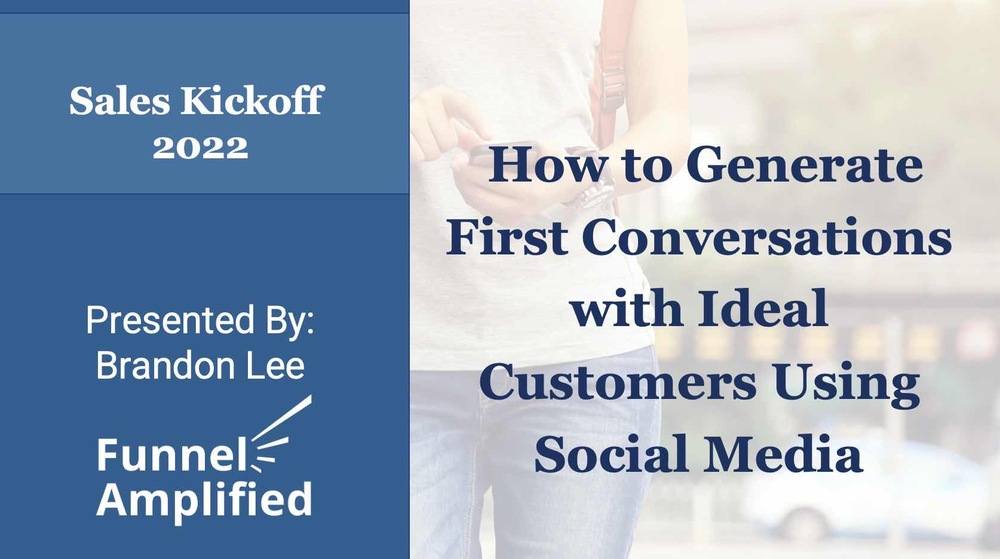McKinsey’s survey of more than 3,600 B2B global decision-makers last August found that just 20 percent of B2B buyers said they hope to return to in-person sales in the future.
Gartner’s “Future of Sales” report similarly states: “The future of sales is the permanent transformation of organizations’ sales strategies, processes, and allocation of resources.”
However, they all agree that while e-commerce has certainly been a key driver in the change that are experiencing, it is not a replacement for sales reps. In fact, sales reps are cited as the clear advantage when it comes to six common buying stages: problem identification, solution exploration, requirements building, supplier selection, validation, and consensus creation.
This seems inherently obvious, but my recent experiences with reaching out to many CMO’s and VPs of Marketing is that they feel their organizations are in flux. They are hesitant to move forward with a cost effective solution, that they have budget for, that shows consistent benefits, that does not require replacing their CRM or ABM solutions (or anything else). They are hesitant not because they don’t desperately NEED to move towards more effective Content Marketing, achieving earned media and employee advocacy, but because they aren’t sure what their sales model going forward will look like.
It’s understandable. After all, many companies are posting record earnings. In the Graphics Communications world (which I have been proud to be part of for 34 years) those companies who were prepared. The had investigated adjacencies to their core business, well in advance of it being critical. They wanted to grow their businesses to new markets that still had correlation to what they did best.
For example, many decided to take on Marketing Services, where they became one-stop shops for clients to execute complete multi-channel marketing campaigns. Those that succeeded did so by providing insights into the what, why and how of the campaign. They helped clients focus on taking advantage of highly personalized content delivery, whether in direct mail, email, social posts or even targeted OTT/CTV and digital media buys. Those companies that made the relatively small investments of money, and the significant investments in time to gather the knowledge needed, succeeded and grew during the pandemic. Why? Because clients needed to push their alternative purchase channels and operating models – hence Amazon’s surge in activity and success of DoorDash and others.
Another example in that space has been printers of all types, that chose to move into Wide Format printing, typically 1.6 meters wide and wider, and digital cutting. Those companies found immediate surges in business (up to 300% as told to me by a top exec at one of the largest print companies) with the need in the market for masks, shields, floor decals, signage, and a whole host of other pandemic related printing. They had to make those investments ahead of time because they knew there was a market need in areas like highly customized short run packaging, home décor and signage. Little did they know the boom that was to come.
In these two examples, sales reps were educated on these services, and given tools to get the word out BEFORE IT WAS CRITICAL to the survival of the company. While much of that work came in through e-commerce sites, make no mistake, some sales rep (sometimes the owner of the company) was speaking with clients pre-pandemic. They were educating clients on the needs of the market, learning about the needs of their clients, building the relationship, developing a cadence of communications – essentially advocating for their employers.
Now, things have changed.
At Funnel Amplified, we call it Employee Advocacy 2.0. Companies are discovering the value of empowering employees with tools to not only grow the company Share of Voice and drive specific buying behavior, but to enable personal brand building where the sales rep becomes that true SME or Trusted Business Advisor – the one that they client will call when the next major challenge hits. This strategy of Employee Advocacy has a huge impact on Revenues and Retention. The 2 biggest R’s in this business climate.
So back to my marketing friends. Your need to build Integrated Marketing strategies and raise Share of Voice is not dependent on the structure of your sales group. Regardless of how B2B sales will be transacted in the future, you need to cut through the noise. Social media content marketing isn’t an optional strategy anymore, but so many aren’t seeing the benefits of what they are already doing. MQL to SQL success is lower than many expected. ABM strategies are far more difficult to make work at scale. Let Funnel Amplified remove that Marketing Paralysis.
Don’t just reshare your content, Amplify it with the FunnelAmplified Content Amplification Platform.




